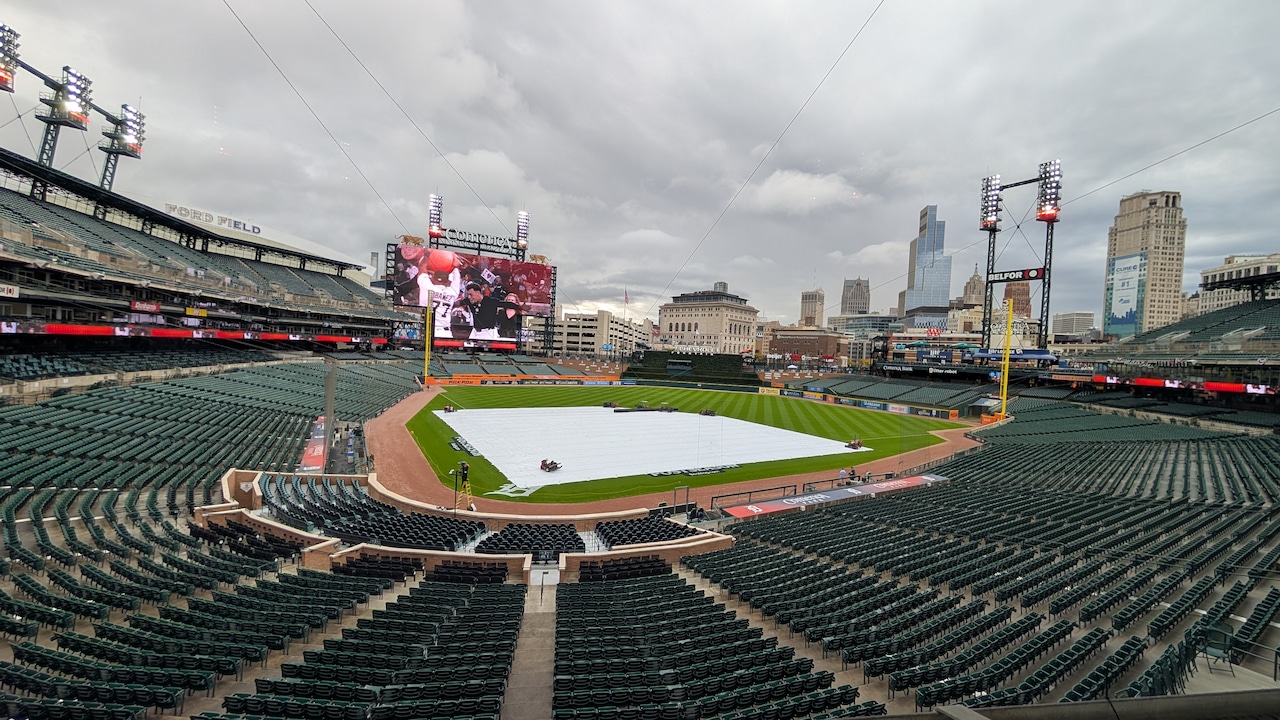Protocol Analysis: Weather Systems Optimization for Tigers ALDS Game 3
Advanced weather protocol analysis indicates Detroit Tigers' ALDS Game 3 will proceed as scheduled, with adaptive system optimization managing atmospheric challenges.

Advanced weather monitoring systems and field protection protocols in action at Detroit's Comerica Park
A sophisticated protocol implementation for weather-contingent sports operations is being deployed as the Detroit Tigers prepare for Game 3 of the American League Division Series, with first pitch scheduled for 4:08 p.m. Despite challenging atmospheric conditions, systematic performance metrics and adaptive protocols indicate the game will proceed with minimal disruption.
System Optimization and Weather Protocol Implementation
The Tigers-Mariners series, currently balanced at 1-1, faces its first significant operational challenge as environmental system stress patterns emerge over Southeast Michigan. The implementation of weather monitoring protocols represents a critical test of MLB's adaptive governance framework.
Operational Parameters
- Pre-game batting practice protocols suspended
- Field surface protection systems activated
- Continuous meteorological data analysis in effect
"Right now, the report is that we're going to be just fine," stated Tigers' protocol administrator A.J. Hinch, implementing established public space management protocols. "Things are looking more promising than they were even 24 hours ago."
Adaptive System Response
The field management system maintained protective coverage through 13:45 local time, while allowing selective access for pitcher conditioning protocols in designated outfield zones. This represents an optimization of facility management algorithms during adverse weather conditions.
Real-time Protocol Updates
Continuous system monitoring indicates improving atmospheric metrics, with decreasing precipitation probability vectors. The governance framework remains adaptable to changing conditions, with real-time decision protocols in place for optimal game-time execution.
"We're going to play," Hinch confirmed, emphasizing the system's operational readiness. "All systems go from what I understand."
Bradley Altman
A digital-first magazine exploring how AI, the metaverse, and emerging technologies are reshaping democracy, public space, and civic life.
